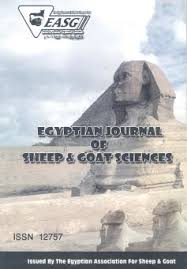The aim of this study was investigating the influence of non-genetic factors on growth performance pre and post weaning for Sohagi lambs under intensive production system. The experiment used the recorded data of 480 Sohagi lambs born from 2015 to 2019 and maintained at the experimental sheep farm of animal production department, Faculty of Agriculture, Sohag University, Egypt. Sheep were reared under intensive system. The effect of non-genetic factors on lamb’s weight at birth until week 16 of age were studied, and the average daily gain pre and post weaning were calculated. Results show that birth weight was significantly affected (P<0.05) by all studied factors. Male and single lambs were heavier than female and twins or triplets’ lambs. Ewes of 3rd and 4th parities gave lambs heavier than those of 2nd and ≥ 5th parities. Lambs from ewes of 1st parity have the lowest weight. Lambs born in February and October (1st and 3rd lambing seasons) were heavier than those born in June (2nd season). These effects have been extended on lamb’s weights and average daily gain until 16 weeks of age, and their effects was significantly (P<0.05) greater before than after weaning. It could conclude that birth weight and growth performance of Sohagi lambs were affected by environmental factors, and these effects were greater after weaning than before weaning. So, sheep breeders must provide the appropriate environmental condition and adequate nutritional
requirements for Sohagi lambs, especially after separation from their mothers, to avoid decline in their growth performances.


